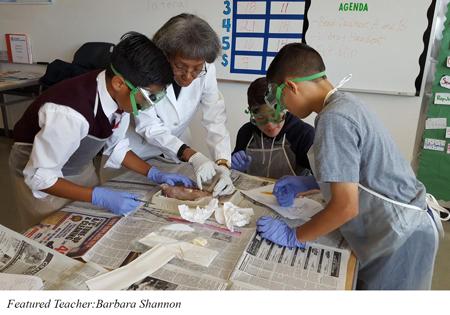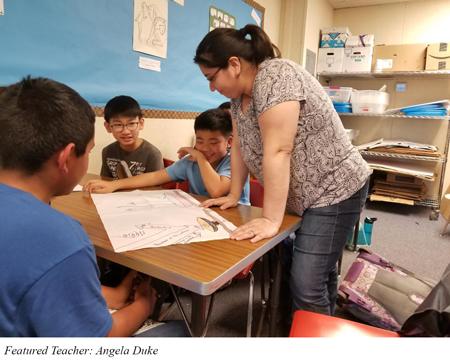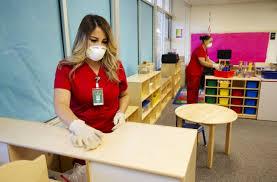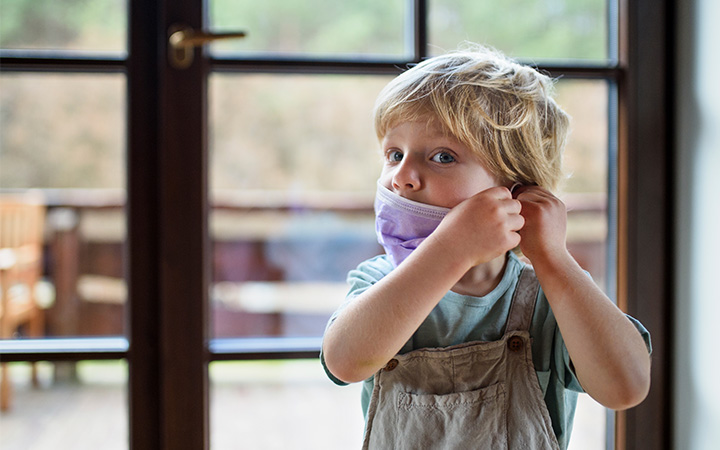
I marvel at science teachers on any given day, but their adaptability when COVID 19 first struck - spinning us into the multilayered spiral of anxiety- has me gobsmacked.
Getting out into the field, observing, recording data, comparing findings and discussion among peers is all part of ‘doing science’. The ‘sharing’ part is how we expand our perceptions, compare data and ultimately grow. Research shows that students learn more when they collaborate face to face.
I can’t imagine how science teachers must have felt when they found out they needed to transition to online learning in a matter of a few days?
More than 30,000 K-12 schools in the United States are being shuttered because of spreading the coronavirus, affecting at least 20 million students
“If you were to walk by our classrooms prior to the quarantine, you would have seen a number of activities, such as students building seed-dispersal contraptions, researching the environmental drawbacks of dams, or using hydrochloric acid to mimic the effects of acid rain on limestone statues. What do these diverse projects have in common? Collaboration!” from Science Instruction in the Age of the Coronavirus by Larry Ferlazzo on May 10, 2020.
I asked a couple of our Featured Teachers how they cope with the world since COVID. “I teach environmental courses which require experiential learning in the classroom and in the field. Distancing learning has severely impacted all channels of communication. It will be even more challenging when we start a new school year; where I’m trying to initiate a personal connection with new students,” said Anand Patel, Co-Chair of Science at Crossroads School for Arts and Science. “But, I’m up for the challenge,” added Anand. (See what I mean about ‘tough’!?).
It Takes MORE Than a Village
Of all the material I have read regarding the effects of COVID 19 on education, I would say the three primary factors that ‘make or break’ distance learning boils down to: Teachers, Parents and Technology.
Teachers
While there has been a great deal of migration in the past several years towards integrating online education into classrooms, nothing could prepare teachers for the most significant and unpredictable global public health crises in recent times. The emotional intelligence added to the logistical expertise required by teachers could never have been predicted.
A couple weeks after COVID 19 hit, I had an opportunity to talk with a middle school science teacher in New Jersey. You may recall New Jersey was one of the worst hit districts in the beginning of the outbreak. “Yes. I have been using more and more google classroom and tablets in my science classes- but, it’s the emotional support that I have to give my students at this time. I mean, how do I ask for a late assignment from my student who has a grandparent in the hospital suffering from COVID 19?”
In this article, Ginger Reynolds, PhD, outlines 5 takeaways about teaching through COVID 19.
- Organizing School Around Students: Not all students have computers or broadband internet access- not to mention a quiet space in their home for concentrate.
- Student Motivation: “Worksheets and lectures didn’t cut it. The reality is that even in traditional school, we can’t control student motivation. Capitalizing on the natural creativity of kids to co-design standards-aligned, meaningful learning experiences and opportunities to demonstrate that learning makes school more engaging in both remote and traditional settings.”
- Mastery NOT Seat Time: “We want them to be able to demonstrate they have mastered the necessary content, concepts, and skills.”
- Assessment: “Conventional, content-heavy tests are difficult to pull off in an online environment. Cheating is just too easy. Instead, many teachers in remote learning found that performance-based assessments – asking students to apply what they learned by creating something – provided better experiences.”
- Meeting Students Where They Are: “The reality is that students have always returned from summer at different places, but this year’s circumstances make it hard to justify proceeding as normal.” Just recognizing this sets realistic expectations and encourages patience and tolerance.
Parents
"When I have the parents, I have the students. When I have the students, I have the parents.
This means that now more than ever, it is imperative to work very closely not only with students but with their parents. The more we can work as a team, the better I will be able to serve my students.”, said one of our Featured Teachers, Guadalupe Martín
Having been a work-at-home mom trying to launch my own business while raising two young children, I can tell you, it’s harrowing. I cannot imagine how parents today are dealing with COVID 19.
This NYT article introduces some of the challenges parents face, they point out that younger children may need more help.
“Parents may need to assist their child with turning on a device, logging into an app, reading instructions, clicking in the right place, typing answers and staying on task. Even the tech-savviest adult will find this difficult while working from home at the same time — a more common scenario as the coronavirus spreads.”
Of all the materials I am reading about parents’ coping mechanisms during the pandemic, one theme is consistent: SCHEDULES and ROUTINES. This LA Times article provides some very useful ‘hacks’ to help out.\
For many parents and educators, incorporating COVID 19 into curriculum provides an incredible learning experience while alleviating stress. This article in Education Dive highlights activities for high schools that explore “viral transmission and exponential growth, simulate the impact of social distancing on infection rates, contextualize the pandemic alongside socioeconomic and policy issues, and even include a media literacy component to help students understand misinformation and identify trustworthy news sources.”
Technology
No question about it. We could not manage education during a pandemic to the degree that we have without technology. And, the pandemic has drastically illuminated the necessity for all students to have high speed access to the internet.
“Uncertainty regarding the format for the return to this academic year adds multiple challenges and stresses. Available and accessible technology, as well as professional development in use and application of technology, for educators and students varies widely, Effectively teaching a course that requires students to have materials in their hands becomes even more complex. The inability to share materials in groups inhibits hands-on teaching and learning,” shared Liz Martinez, Curriculum and Professional Development Specialist at the Center for Teaching and Learning at the Illinois Mathematics and Science Academy.
“Educators are working diligently on solutions. Many have shared that their networking has increased and provides a rich resource of ideas as well as a support "family". Creativity in altering lessons to include student use of household items where possible and formats in which students share their work and collaborate with other students is admirable and productive,” adds Liz.
A point that I hadn’t considered until I interviewed our new Featured Teacher, Katrina London, was how those that do have high speed access are benefitting from more ‘behind the scenes’ information and activity than they would before COVID hit. In making her summer programs more engaging Katrina enlisted support from her colleagues and researchers at the Seymour Discovery Center who welcome students to their research and activities like aquarium feedings not otherwise included in her programs.
Here at Shape of Life we never could have predicted how popular our online resources would be to science teachers when we first launched many years ago. Our short videos, lesson plans, featured articles and activities have seen a significant increase in usage since COVID 19 began. We experienced more than a 25% increase in website visits in April – June 2020 than we did January – March in 2020. And, a 56% increase since this time last year. Our short Phyla videos along with our Featured Creatures have been some of our more popular landing places.
“It is not the strongest of the species that survives, nor the most intelligent. It is the one that is most adaptable to change.” Charles Darwin
One thing COVID 19 has taught me is that we are stronger when we work together and protect each other. That’s how I think of survival. What we may lack in federal direction we make up for in local action. Please stay safe and continue to take good care of one another.
Additional Resources:
- PhET - students participate in simulations that also include math
- Explorelearning - students are assigned Gizmos, which are simulations; also covers technology and engineering
- GeoScience Online Teaching Resource - a list of websites broken down by topic for earth-science classes
- HHMI BioInteractive - topical resources for earth and life sciences that includes videos, activities, and authentic data that can be analyzed; specializes in high school and AP classes
- The Science Bank: Online Dissections - a comprehensive list of online resources where students can perform dissections on many species, such as fetal pigs, cats, crayfish, sharks, and frogs; also offers human anatomy online lessons
- Molecular Expressions - interactive tutorials of virtual microscopes, focusing on many topics, such as microscopic creatures, lunar samples, computer chips, and superconductors.
By Denise Ryan















